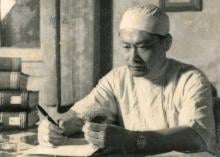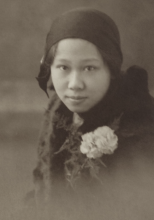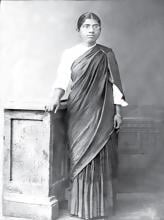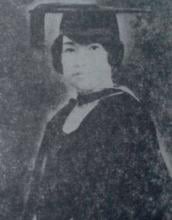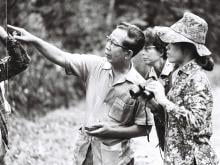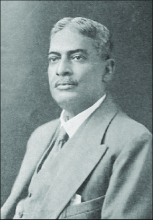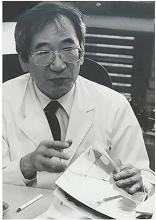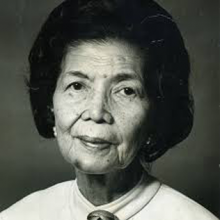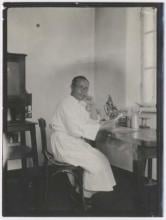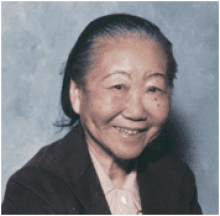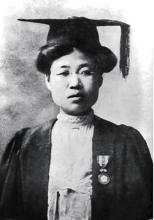Medicine
News

19 Mar 2008
A vegetable-rich diet has been linked to a higher risk of obesity in Chinese people

16 Mar 2008
Summaries of newsworthy papers: Perception of depth and depth of perception, Lifeline for tumour cells can be cut, Receptor crystallization speeds up, Rocks on film, A new drug for schistosomiasis, Adapting brain and behaviour to match the environment, Reining in lethal inflammation, Damage limitation and Finding allele-specific gene expression

14 Mar 2008
Researchers from Keio University are working on new medical technology to balance immunological and inflammatory reactions. They are also working on monitoring chips for the critically ill patients, quick diagnostic procedures for infectious diseases and materials for prevention of in-hospital infection

12 Mar 2008
Newsworthy papers: Deep impact, The worm turns, Changing nitrate sinks, Subverting a metabolic pathway for tumour growth, Missing cells to blame in Job’s syndrome, Neural coding of visual information, Partners in crime for neurodegenerative diseases, Clever catalysis in a gut microorganism and DNA Lego

12 Mar 2008
This week in Nature China - A combination of DNA vaccination in conjunction with conventional chemotherapy may provide better control of tuberculosis

09 Mar 2008
Summaries of newsworthy papers include The tree rings have it, Oncogenic microRNA and New resources to precisely map mutations in the fly – Nature Methods

06 Mar 2008
Research findings relating to a method for diagnosing breast cancer developed by Professor Masami Ando of the DDS Center, Research Institute for Science and Technology, Tokyo University of Science were announced.

05 Mar 2008
Summaries of newsworthy papers include Neuroscience: Building a picture of sight, Biomaterials: Know your hydrogel onions, Information processing: Quantum interface and Where have all the midges gone?

05 Mar 2008
In Nature China this week - Researchers have used a marine yeast to successfully reduce the incidence of black rot in cherry tomato harvests

02 Mar 2008
Summaries of newsworthy papers: Biogeography- Cosmopolitan phages, The not-so-sweet side of malaria, An atomic force pencil, Let there be light, Genetic variants predisposing to coeliac disease, Mitochondrial DNA deletions affect lifespan, Smokers insensitive to what might have been, Bone marrow nurturers, Altered stem cells accelerate ageing ...

01 Mar 2008
Researchers map genetic alterations associated with human schizophrenia

28 Feb 2008
Dust mite and cockroach allergens aggravate the symptoms of eczema and similar diseases by disrupting skin barrier function, a study published online this week in the Journal of Investigative Dermatology reports. The work provides a crucial step in understanding how the skin’s defenses are weakened by allergens it encounters daily.

28 Feb 2008
Summaries of newsworthy papers include Male and female flies wired differently for sex, A threshold for massive star formation, Completing the record, Locating what’s in the larder, An engineering material toughens up and Donning a disguise outside the theatre

27 Feb 2008
Highlights from Nature China include - Scientists in Beijing have identified the gene responsible for cell-corpse degradation, A fossil found in north-eastern China reveals the smallest ever pterosaur and scientists in Beijing have assembled a logic gate using nanocontacts and nanowires made from a metal alloy

24 Feb 2008
Summaries of newsworthy papers include Long-distance groundwater flow on Mars, Dust in the wind, Silicon lasers march towards the mid-infrared, Drug detective kit for the cell’s powerhouse, Towards a ‘cloak’ for magnetic fields, Pathway influences human hair growth and texture, Cows as genetic models and more

22 Feb 2008
Tying short RNA molecules into loops gives them a stability boost, which could lead to more effective therapeutic strategies for modulating gene expression

22 Feb 2008
The neurons in the primary visual cortex processing high- and low-frequency images are distinct

22 Feb 2008
RIKEN researchers find link with protein build-up

22 Feb 2008
An exhibition created by RIKEN researchers at the National Science Museum in Tokyo is educating the public about the sequencing of the human genome and new directions in the post-genomic world.

20 Feb 2008
Other newsworthy papers include Renewable cell therapy for diabetes inches closer from Nature Biotechnology and Treatment-resistant depression might be in the genes from Neuropsychopharmacology.

20 Feb 2008
Summaries of newsworthy papers including Mars: Understanding its water flow, Diabetes: Sugars regulate insulin signalling, Evolutionary Biology: A photosynthetic parasite, Chemistry: Reacting the unreactable, Structural biology: Defining an anti-HIV protein, Tectonics: Deep mantle penetration events, And finally… Bend me, break me

20 Feb 2008
In Nature China this week - A new strain of natural antibiotic could help stop bacterial blight in rice, SARS virus: Rafting into host cells, Anticancer agents: A clue to how they work and more.

17 Feb 2008
Summaries of newsworthy papers include Mississippi sinking, Pass the acetyl, please, New syndrome of mental retardation and epilepsy identified, Gene hunters strike oil and Reversing impaired brain function in diabetes – Nature Neuroscience

15 Feb 2008
A protein with an important role in regulating gene expression may have other duties relating to chromosome maintenance

15 Feb 2008
Researchers unravel how specific connections result in the layering of neurons in the brain

13 Feb 2008
Summaries of newsworthy papers include Astrophysics: Progenitor of a type Ia supernova, Genomes: Last of the single cells, Mineralogy: What’s in the transition zone of Earth’s mantle, Food webs: Chaos reigns and Energy scavengers for power dressing

13 Feb 2008
The article discusses issues of patents, role of WTO, issues in New Drug Approval and R&D strategies adopted by Indian pharmaceutical companies and provides the basic understanding of the key success factors vital in the pharma industry.

10 Feb 2008
Summaries of newsworthy papers include Undetectable ocean trends, Physics at the beach, DNA proves its potential, Genome-wide view of prostate cancer risk, fMRI tracks monkey ‘voice’ area, How HIV ravages gut immune cells

10 Feb 2008
Building for Clinical Research*, a cluster-type research infrastructure, was inaugrated at Shinanomachi Campus. The facility will be used for several research clusters to promote research between different fields. It was designed to be low-impact and long-lasting, and cope with the ever-changing needs of leading-edge medical research.

06 Feb 2008
Summaries of newsworthy papers include Stem cells: Circadian rhythms, Planetary science: Evidence for water, Plants: Recovery from nitrogen, Neurodegeneration: The plaque to dementia, DNA vaccines: TBK1 is doubly important, Essay: Darwin’s Enduring Legacy, Tectonics: Slice of subduction and Holography: An added dimension
Researchers
Sorry, no researchers coming up for this topic.
- « first
- ‹ previous
- 1
- 2
- 3
- 4
Giants in history
Vietnamese surgeon Tôn Thất Tùng (10 May 1912 – 7 May 1982) developed a pioneering technique that reduced the risks and mortality rate of liver operations.
Michiaki Takahashi (17 February 1928 – 16 December 2013) was a Japanese virologist who developed the first chickenpox vaccine.
Irene Ayako Uchida’s (8 April 1917 – 30 July 2013) strides to understand genetic diseases such as Down syndrome paved the way for early screening of chromosomal abnormalities in foetuses.
Baron Kitasato Shibasaburo (29 January 1856 – 13 June 1931) was a Japanese physician and bacteriologist whose work led to a new understanding of preventing and treating tetanus, diphtheria and anthrax.
Maggie Lim (5 January 1913 – November 1995) was a Singaporean physician who promoted family planning and expanded the access to clinics to improve the quality of life for mothers and children in Singapore’s early days.
By isolating soil microorganisms and studying the compounds they produce, Satoshi Omura (born 1935) discovered almost 500 organic compounds with unique properties that were produced by these microorganisms, including many new antibiotics.
The founder of the Adyar Cancer Institute in India, Muthulakshmi Reddy (30 July 1886 – 22 July 1968), fought to uplift women and girls from impoverished situations.
Chinese-American virologist and molecular biologist Flossie Wong-Staal (27 August 1946 – 8 July 2020) was the first scientist to clone HIV and determine the function of its genes.
Maharani Chakravorty (1937 – 2015) was one of India’s earliest molecular biologists whose research paved the way for advances in the treatment of bacterial and viral infections.
Archana Sharma (16 February 1932 - 14 January 2008) conducted research into plant and human genetics that expanded the understanding of both botany and human health. In relation to botany, she uncovered the means by which asexually-reproducing plants evolve into new species.
The first Thai woman to receive a degree in medicine, Margaret Lin Xavier (29 May 1898 – 6 December 1932), is best remembered for her compassion towards her less privileged patients.
In 1915, pathologist Katsusaburo Yamagiwa and his research assistant Koichi Ichikawa became the first to prove that chronic exposure to chemicals can cause cancer.
In 1915, Koichi Ichikawa along with pathologist Katsusaburo Yamagiwa became the first to prove that chronic exposure to chemicals can cause cancer.
Husband and wife team, Kimishige (3 December 1925 – 6 July 2018) and Teruko Ishizaka (28 September 1926 – 4 June 2019) discovered the antibody class Immunoglobulin E (IgE) that triggers allergic reactions. They also discovered that IgE antibodies attach to white blood cells, known as mast cells, releasing histamine, which causes allergic reactions.
Husband and wife team, Kimishige (3 December 1925 – 6 July 2018) and Teruko Ishizaka (28 September 1926 – 4 June 2019) discovered the antibody class Immunoglobulin E (IgE) that triggers allergic reactions. They also discovered that IgE antibodies attach to white blood cells, known as mast cells, releasing histamine, which causes allergic reactions.
Japanese chemist Takamine Jokichi (3 November 1854 – 22 July 1922) founded the Tokyo Artificial Fertilizer Company, where he isolated a starch-digesting enzyme (named takadiastase) from the fungus Aspergillus oryzae.
Ground-breaking cancer researcher Kamal Jayasing Ranadive (8 November 1917 – 11 April 2001) advanced the understanding of the causes of leukaemia, breast cancer and oesophageal cancer through the use of animal models. She was also among the first to recognise how susceptibility to cancer is linked to tumour-causing interactions between hormones and viruses.
The research of Filipino pharmaceutical chemist Luz Oliveros-Belardo (3 November 1906 – 12 December 1999) focussed on essential oils and other chemicals derived from native Philippine plants.
Thai physician and conservationist Boonsong Lekagul (1907 – 1992) made major contributions to the preservation of his country’s wildlife.
Indian scientist and physician Upendranath Brahmachari (19 December 1873–6 February 1946) is best known for creating a drug called Urea Stibamine, used to safely and reliably treat visceral leishmaniasis (or Kala-azar), a severe infection caused by the Leishmania parasite.
Filipino chemist and pharmacist Manuel A. Zamora (29 March 1870 – 9 July 1929) is best remembered for his discovery of the tiki-tiki formula to combat beriberi, a disease caused by Vitamin B1 deficiency.
Korean parasitologist Seung-Yull Cho (16 November 1943 – 27 January 2019) is remembered largely for his pioneering works to control infections caused by helminthic parasites and his contribution to journal publishing.
Fe Villanueva del Mundo (27 November 1911 – 6 August 2011) was a Filipina paediatrician who founded the Philippines’ first paediatric hospital.
After witnessing death and suffering as a youth in his home village during World War II, Nguyễn Tài Thu (6 April 1931 – 14 February 2021) set his sights on alleviating pain by becoming a doctor. After studying Traditional Chinese Medicine in China in the 1950s, Thu returned to Vietnam to serve in military hospitals. Eventually, he became the country’s foremost practitioner of acupuncture, a technique he first learned by inserting needles into himself.
Minoru Shirota (April 23, 1899 – March 10, 1982) was a Japanese microbiologist who invented the popular fermented drink Yakult.
Wu Lien-teh (10 March 1879 – 21 January 1960) was a Malaysian-born doctor who invented a mask that effectively suppressed disease transmission. Winning the prestigious Queen’s Scholarship enabled Wu to become the first Chinese student to study medicine at the University of Cambridge.
David T. Wong (born 1936) is a Hong Kong-born American neuroscientist who is best known for discovering the antidepressant drug fluoxetine, better known as Prozac.
Indian organic chemist Asima Chatterjee (1917 to 2006) studied the medicinal properties of plant products, especially compounds known as vinca alkaloids.
Chika Kuroda (24 March 1884 – 8 November 1968) was a Japanese chemist whose research focussed on the structures of natural pigments.
Umetaro Suzuki (7 April 1874 – 20 September 1943) was a Japanese scientist best remembered for his research on beriberi, a disease caused by vitamin B1 deficiency, characterized by limb stiffness, paralysis and pain.
Salimuzzaman Siddiqui (19 October 1897 – 14 April 1994) was an artist and chemist from Pakistan whose research focused on natural products from plants.
Barry Paw (29 August 1962 – 28 December 2017) was a biologist and oncologist who discovered several novel genes and their functions in red blood cells.
Syed Qasim Mehdi (13 February 1941 – 28 September 2016) was a Pakistani molecular biologist who was a founding member of the Human Genome Diversity Project (HGDP), which assessed human diversity by studying human migration, mutation rates, relationships between different populations, genes involved in height and selective pressure.
Tsai-Fan Yu (1911 – 2 March 2007) was a Chinese-American physician and researcher who was the first female full professor at Mount Sinai School of Medicine. She discovered that gout, a condition characterized by the painful inflammation of joints, was caused by elevated levels of uric acid in the bloodstream.
Min Chueh Chang (10 October 1908 – 5 June 1991) was a Chinese-American biologist who studied fertilization in mammalian reproduction.
A Japanese surgeon, Tetsuzo Akutsu (20 August 1922 – 9 August 2007) built the first artificial heart capable of keeping an animal alive.
Ogino Ginko (3 March 1851 – 23 June 1913) was the first registered female doctor to practise modern medicine in Japan.
Esther Park (1877-1910), born Kim Jeom-dong, was the first female Korean physician to practise modern medicine in Korea and trained the first generation of Korean female doctors.


